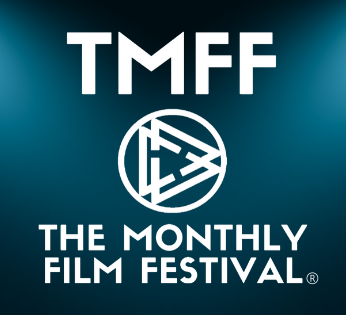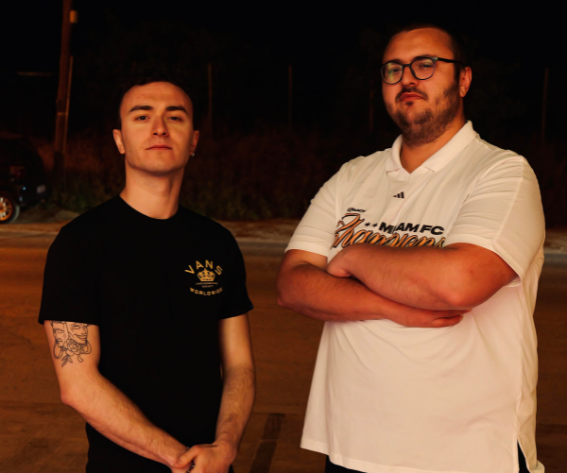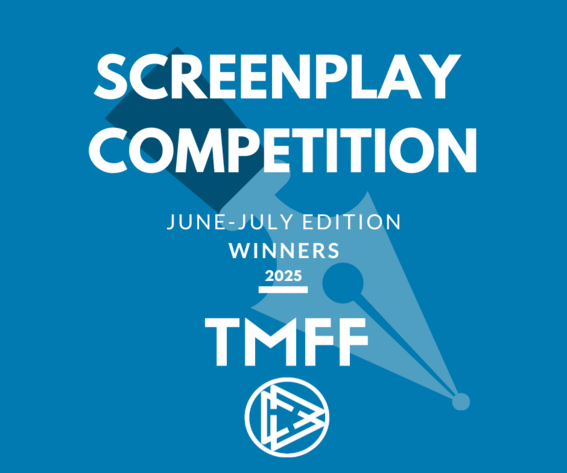June’s Film of the Month, ‘Ruins‘, doesn’t explode with spectacle; it seeps in like a lingering memory you can’t quite shake. A haunting meditation on guilt, grief, and the shadows of the past, ‘Ruins’ swept the board this month, winning Director, Screenwriter, Actor, and Cinematographer of the Month alongside its top honor. At its core are two estranged brothers, returning to their childhood home years after a brutal family tragedy. With its stark, atmospheric lighting and restrained, powerful performances, ‘Ruins’ unfolds like a slow burn, more felt than seen, more whispered than spoken. We spoke with the film’s co-directors, Vagelis Karampasoglou & Alexandros Saoulidis, about the deeply personal inspiration behind ‘Ruins’, the striking choices in its visual language, and why this short might just be the beginning of something larger.
TMFF: What was the inspiration for ‘Ruins’?
VK: The inspiration behind our film did not stem from any existing movie or series, unlike our debut feature The Cost (2024). The idea of two estranged brothers reuniting after years of silence—only to find themselves unable to process the trauma inflicted upon them by their parents and the complex bond between them—first occurred to me when I was just 20 years old. I remember having written a logline about a stand-up comedian battling substance addiction, who receives an unexpected visit from his brother, attempting to help him recover. Naturally, over the years, this idea evolved, eventually taking shape as Ruins (2025). Following our first film, The Cost (2024), which dealt with a reckoning between a father and son, I knew I wanted to continue exploring the theme of emotional confrontation within close familial relationships. Thus, I wrote Ruins as the second installment in what I envision as a trilogy of reckoning—this time focusing on two brothers who are forced to confront the damage between them. Additionally, we aspired to create a deeply moving drama that would not only highlight the complexities of brotherhood but also serve as a protest against the indifference—or at times, the outright failure—of the Greek justice system to protect victims of domestic abuse. Beyond that, the film addresses the generational trauma such abuse leaves behind in children, relatives, and friends of those affected. Through Ruins, we sought to examine who we might have become if we had been raised in such a toxic environment—one disturbingly close to the reality of contemporary Greek society—and how that would have shaped our relationships with our own siblings. In a reality this harrowing, any one of us could have been either “Lazaros” or “Angelos.”
TMFF: Could ‘Ruins’ develop into a feature film? Any plans in that regard?
VK: Naturally, our film could very well have become a feature-length production. The first cut of the film ran close to 50 minutes, but several scenes were ultimately removed during editing to shorten the final runtime. However, had we made the decision to write and shoot a few additional scenes—enriching both the narrative and the characters—we could have quite easily created our first full-length feature. Unfortunately, due to a lack of funding and time, we were unable to do so. The conditions for independent filmmaking in Greece remain extremely challenging. Ideally, we would have liked to approach the project from the outset with the mindset that we were creating a feature film. That shift in intention would have allowed us to deepen the emotional and dramaturgical layers of the story. And that challenge, that creative risk, would have been our driving force. We hope that someday we will have the opportunity to bring that vision to life. In the meantime, we are currently exploring the possibility of creating a new short film.
TMFF: How was the filming process?
VK: As is often the case with independent productions, we had very limited time, numerous technical difficulties, and had to make many compromises. Filming took place during the summer—when Greece is practically in it’s boiling point—so the conditions were already quite challenging from that alone. We all worked tirelessly in the heat and managed to complete the entire shooting in just five days. The first three days were spent at the Cultural Center of Thermi, where—thanks to the generous support of Theofilos Lalos, the lead actor from our first film, The Cost (2024)—we were able to access and utilize the theater space, backstage areas, and more. The following two days were filmed at the “family home” where the two brothers in the story lived. Unfortunately, those days proved even more complicated, as we faced difficult weather conditions and several technical setbacks. Thankfully, none of these significantly affected the final outcome. Despite all the challenges, we have no complaints. This film was made in collaboration with a wonderful group of friends who gave their absolute best and embraced the project with great enthusiasm. So when you have the joy of working alongside friends and doing what you love, you can only feel grateful.
TMFF: The film poster is great, what was the thought process behind it?
AS: The concept for the poster was very much in the hands of the designer, Kostis Kyriakou. After a conversation we had — where I basically walked him through the film scene by scene — he specifically asked not to watch the film, so he wouldn’t be influenced directly by it. Instead, I showed him the trailer, and then we spent time looking at posters from old films that we both love. Some of those were classic Saul Bass posters, like Anatomy of a Murder or The Shining. When we received the first draft from Kostis, he told me that the scene of the rehearsal — which is the film’s opening — really stood out to him based on how I had described it. He thought the mirror, through which Lazaros watches himself as he plays, carried a strong symbolic weight. That idea of reflection, of seeing oneself, really stayed with him, and that’s why he chose the mirror as the central element of the poster’s concept.
TMFF: There are a lot of interesting lighting decisions, anything that stood out in the process?
Chris Prantza, DOP: We had a lot of early discussions with the directors to make sure the lighting, contrast, and camera movement matched the emotional tone of each scene. Every shot was carefully planned to reflect what the characters were feeling — not just visually, but psychologically. My favorite example is the scene where Lazaros gets bad news while standing in the courtyard of an old outdoors cinema. The lighting forms a shell around him, trapping him in that moment with no way out. We also used strong contrasts and shadows during the intense scenes between the brothers, while in their childhood home, the light shifts to something softer and warmer — reflecting a more personal, nostalgic tone. For me, lighting was always about mood and meaning — helping the audience feel what the characters can’t always say.
TMFF: What do you hope the main takeaway to be from ‘Ruins’?
VK: What I hope people take away from Ruins is a deeper understanding of how generational trauma shapes identity, relationships, and emotional survival. At its core, Ruins (2025) is a story about how trauma leads to hate, self-destruction and estrangement — two brothers who, though bound by blood, have become emotional strangers to each other. Their reunion is full of inherited pain, shame, and unresolved guilt. They have each, in their own way, absorbed the violence of their upbringing — not just physical or verbal violence, but the systemic, unspoken kind that passes from one generation to the next. Through this lens, our short film becomes not only a family drama, but a reflection on the urgent need to address toxic masculinity and misogyny, especially as they manifest in Greek society. The film acts as a quiet protest against that culture — a culture in which pain is ignored until it erupts in violence, and in which victims of domestic abuse are often silenced or dismissed by institutions that were meant to protect them. I believe that healing — personal, familial, societal — begins with naming the wound. It begins with communication. With solidarity. If there’s one lasting feeling I hope viewers take with them, it’s that silence is not neutral. It protects no one. But by confronting the silence, we can begin to imagine a different kind of future. One built not on fear, but on empathy, accountability, and connection.
TMFF: With the success of filmmakers like Yorgos Lanthimos, is there more of a spotlight on Greek filmmakers today?
AS: Absolutely, the success of Yorgos Lanthimos has had a huge impact on how mainstream audiences perceive Greek cinema today. Mainly because his films managed to achieve not only critical acclaim and success at festivals and industry events, but also mainstream recognition — something that, in previous eras, with filmmakers like Theo Angelopoulos for example, wasn’t as present. So I’d say Lanthimos really brought Greek cinema more into the mainstream spotlight.
VK: Despite the immense success of Yorgos Lanthimos, I believe there is still a great deal of skepticism — both toward him as an artist and toward Greek cinema more broadly. Lanthimos has had an impressive international career, but in my country, I don’t often come across people who truly recognize his artistic value, and personally, that deeply disappoints me. I wish I could view this reality with more optimism, but the truth is that there is no spotlight for filmmakers in Greece today. And of course, even those who do manage to distinguish themselves, once they find the opportunity, are often forced to leave the country. Naturally, I don’t believe this is the fault of the artists themselves, but rather a reflection of what audiences have been conditioned to expect and what production companies are interested in selling. That said, my personal belief is that Greece has always had — and still has — incredibly talented filmmakers. But the system itself rarely allows them the space or support they need to grow, evolve, and reach their full potential.
TMFF: What would you have done differently for ‘Ruins’?
AS: There aren’t many things we would have done differently in Ruins, but two moments stand out for me personally. The first is the final theatre scene. I wish it had featured a real, physical audience instead of CGI. There’s an irreplaceable energy and authenticity that only a live crowd can bring. That said, realistically, gathering 200 to 300 people to fill a theatre was beyond our resources. The second is a scene just before the chase, where the theatre is about to be stormed by the police. The original concept was quite different — more focused and deliberate — but it didn’t come together as planned. We had to settle for a compromise that, while functional, didn’t fully capture the vision we had. However, considering the cost versus the benefit, it wasn’t worth pursuing further changes.
VK: Of course, these were the main aspects we wish had been different, but unfortunately, under the circumstances, there wasn’t much more we could do. Personally, I wouldn’t make any other major changes. Perhaps a few lines in the script could have been written differently, maybe we could have framed certain shots another way — and most likely, I would have tried to deliver an even stronger performance as an actor. Other than that, we’re both very satisfied with the final result.
TMFF: How did co-directing this short film feel for both directors?
AS: Working with Vagelis feels like working with a brother. We’ve spent so much time together — from our childhood years, through our teens and into adulthood — that it has shaped the way we communicate with each other, both when it comes to sharing ideas and handling disagreements. Another important aspect is that we both understand the difficulties of the roles each of us takes on. For example, I understand how challenging it is for Vangelis to both act and co-direct at the same time, and he equally understands the responsibility I have to complete the post-production of the film. For me, collaboration is a fundamental part of filmmaking. No one has ever truly made a film completely on their own. There are always people involved, especially in key creative positions — whether it’s during post-production or on set — who bring their own vision and artistic perspective. So, in a way, co-directing feels like an extension of that same collaborative spirit.
VK: I completely agree with Alexandros. It’s incredibly rare to share not only a friendship that has lasted for years, but also a common, lifelong dream. For me, the most essential ingredients in a collaboration like this are communication and trust. When you trust your collaborator completely, and you’re both willing to listen, compromise, and challenge each other. If you combine that with a genuine love for cinema, then you’re not just making a film. You’re building a piece of yourselves together. And that’s something deeply meaningful — something that stays with you long after the camera stops rolling.









Leave a reply